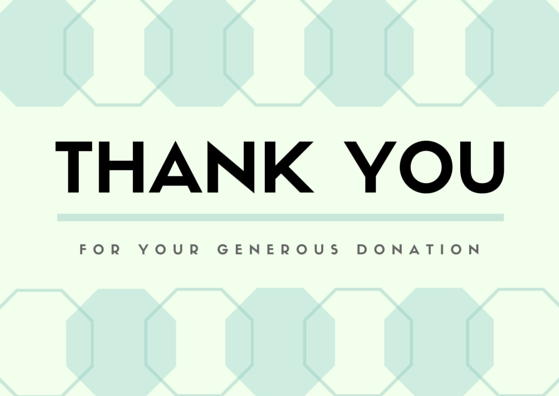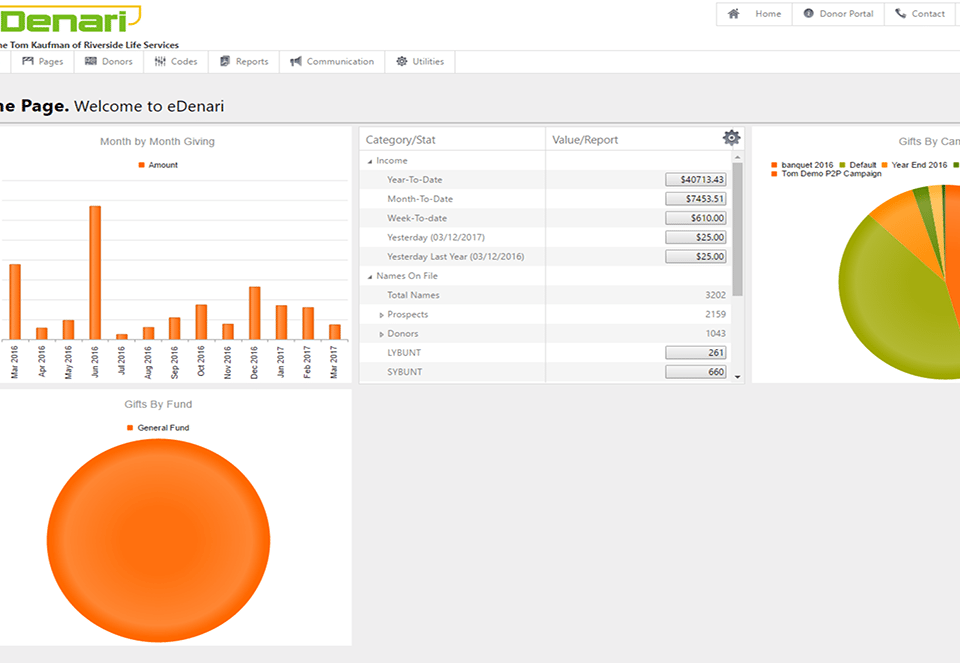- Want a demo?
- 800-352-0312
- sales@denarisoft.com
Did you know that for most donors their single largest point of contact with your organization is the receipts and thank you letters you send? It’s true, particularly with monthly donors.
So since receipts are important, let’s take a look at some best practices. Here are some topics we’ll cover in this article:
- Frequency of Receipting
- Thank you letters
- Email versus paper
- What about those who give regularly by eft or cc
- End of year requirements
- A few miscellaneous tips
Frequency of Receipting
I was taught on day one of my donor management experience that my number one priority should be to turn around gifts we receive with a clean, professional thank you package within 24-48 hours. There are three reasons for this:
- The receipt confirms in the mind of the donor that you received the gift and posted it correctly.
- The thank you letter expresses your gratitude.
- The receipt package should have some opportunity to give another gift, thus increasing fund-raising.
For these reasons I recommend running receipts daily, or at least as often as you enter gifts. It’s an easy function in most software, even if you are managing email and paper versions.
Thank You Letters
A receipt/thank-you package should always have an appropriate thank you letter associated with it. Think of the thank you letter as a continuation of the conversation. For example, if you sent out direct mail soliciting funds for a Clean Water Project, then your thank you letter should certainly talk about the same project. I would even consider using some similar phraseology to connect the story in the donor’s mind. I might use the same quotation, or the same story, or a similar story. The name of the game is to continue to engage the donor about the topic they responded to.
Good donor management software should allow you to select from a library of letters such that each gift gets the most appropriate thank you. I do not suggest using a single thank you letter for all donations. In my experience it is worth the effort to write a series of thank yous, touching on each area of your programs.
Samples of Paper Receipts
The only variable I see from organization to organization is the age of their constituency. Everyone seems to be in the same state of transition, from all paper to mostly email. If your donors are older then you have more paper and less email. But, either way, your systems need to support both email and paper versions, and have a convenient way for the donor to express their preference.
Typically, a paper-based receipt package will contain 4 things:
- A window envelope
- The thank you letter and receipt
- A response coupon
- A business reply envelope
I find that paper receipts usually work best on pre-printed paper with elements of your letterhead and also shaded areas for data elements like YTD giving. Usually, it’s worth it to invest in special paper with perforations. Here is a sample of a good looking, well-designed paper receipt.

This receipt is a little light on the thank you letter, but nicely formatted with a tear-off coupon.
Here is another example of a clean, workable design for paper.

Samples of Email Receipts
The same basic elements need to be included in an email receipt. Of particular importance is providing an opportunity for the next donation, like a link to a giving page.

And another example:

Email Versus Paper
It’s really a matter of the donor preference. You need good software that will manage both platforms and control the outputs by a donor preference. Some systems offer a donor portal where the donor can login and specify their preference. To me this seems critical.
Even if you only have a few donors asking for email receipts, keep in mind that the trend is inevitable. As the next generation of donors takes over, virtually all donors will want email. I suggest that you begin the transition today, if you haven’t done so already. Start offering eReceipts.
What about Electronic Monthly Donors?
I hear debate over the question of receipting those Credit Card and EFT monthly donors. On one hand, leave well enough alone. They are sending gifts monthly so why rock the boat.
On the other hand, we don’t want the donor to feel taken for granted.
So where is the balance?
One feature that I really like is the quarterly giving statements. These seem to strike a nice balance between “pestering” the donor with unnecessary receipts and ignoring them altogether. A quarterly giving statement could look something like this:

End of Year Requirements
Although you’ll want to check with your CPA for actual tax advice, it has been my experience that best practices include sending and End of Year Tax Statement to every donor from the prior year. This is a piece of mail/email that they are sure to open and read. Why not use it as a fund-appeal and make it an extra fund-raiser.
Summary
Remember the adage….”strive to turn around a professional receipt package within 24-48 hours” and you should be good. Also, be sure your software is up to the task of paper and email versions for all relevant statements.
Therefore in closing I would like to quote a friend and colleague on her experience with Receipts.
“The tax laws for non profit (as you well know) require that we are able to provide them with a written acknowledgement for any single contribution of $250 or more before they can claim it on their federal income tax return. Our tax letters with itemized gifts at the end of the year will easily cover this requirement, so why would we want to incur additional administrative costs to duplicate this artifact? As a current donor, why would I want any of my donation to be spent on additional mailings, or my inbox filled with notifications of gifts when I only need one tax document at the end of the year? Beyond a simple preference for physical documents instead of email, most of building a non-profit is building relationships. People like to feel appreciated in the relationships they are invested in and sending receipts is one way to accomplish this.”
Sidra Miller
Systems Consultant
sidra.miller@africanvisionofhope.org





